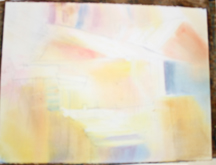
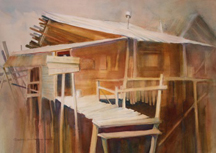
The bane and the blessing of watercolor is negative painting. Bane because so many find it difficult. Blessing because of the way it can unobstusively direct the eye and focus attention. Learning to do it is like learning to back a trailer. It is difficult enough to teach in a class situation so teaching it without watching you as you try will be even more challenging. But here goes!
How do we get from that wet-on-wet start discussed in earlier posts to finished paintings? Mainly by negative painting and layering. We are always pushing back to bring other shapes forward. For example, on the left you see the end of my first wash for Natty Dred’s Love Shack. On the right is the finished painting. The white shapes — what is left of the white paper — lead you through the painting. With layers of negative painting they were carved out.

 Are you sure, when your painting, what it is you intend to have as your focus? Do you plan it, or just let it happen? Let’s take some time this month to get focused!
Are you sure, when your painting, what it is you intend to have as your focus? Do you plan it, or just let it happen? Let’s take some time this month to get focused!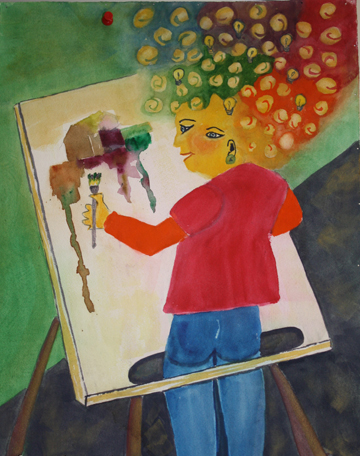 Caroline Getting into Her Painting by Joanne McDonald
Caroline Getting into Her Painting by Joanne McDonald
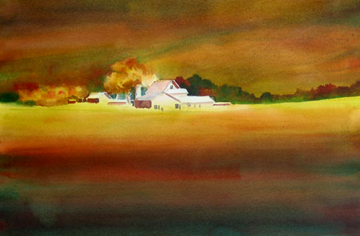

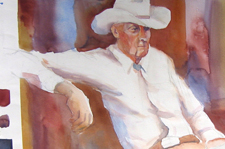
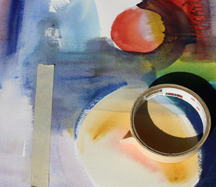 “That’s worth the price of the class!” When someone sings this out in a class — after I have just made a helpful hint aside — I always cringe. I hope not. But when you have struggled for ages with something and then hear a solution that sounds so easy, you think you might have paid to have known that.
“That’s worth the price of the class!” When someone sings this out in a class — after I have just made a helpful hint aside — I always cringe. I hope not. But when you have struggled for ages with something and then hear a solution that sounds so easy, you think you might have paid to have known that.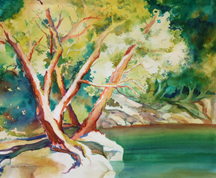 Most of those who use the technique corner are from the Pacific Northwest and while some of this month’s challenge will be specifically to you, there is no reason why those of you in other areas can’t adapt these ideas to a show near you.
Most of those who use the technique corner are from the Pacific Northwest and while some of this month’s challenge will be specifically to you, there is no reason why those of you in other areas can’t adapt these ideas to a show near you. There are fewer than 10 commandments in watercolor. One of the most important is the answer to the question, “How much water?”
There are fewer than 10 commandments in watercolor. One of the most important is the answer to the question, “How much water?”